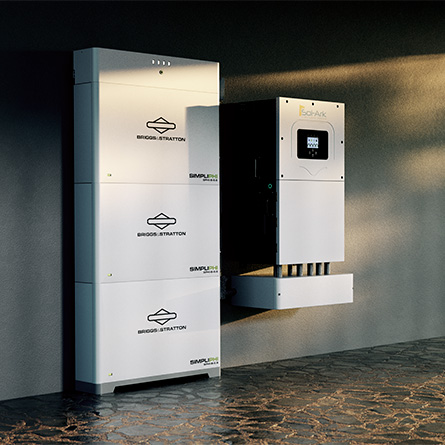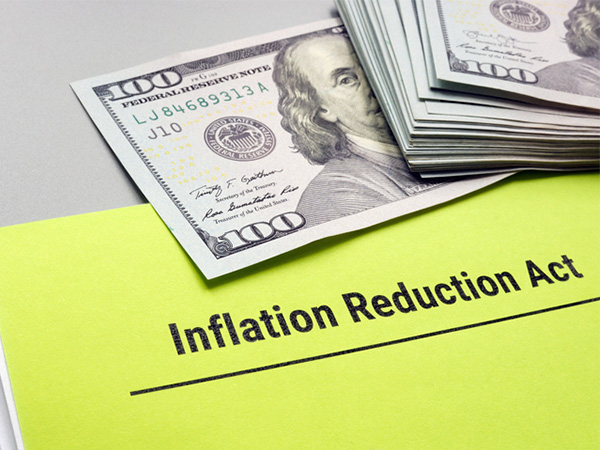On August 16, 2022, President Joe Biden signed the Inflation Reduction Act of 2022 into law.
This comprehensive piece of legislation includes large investments in the renewable energy industry as well as domestic energy production and manufacturing. It also seeks to provide homeowners with energy cost savings while making it easier and less costly to incorporate clean energy and energy storage into their daily lives through tax credits and other financial incentives.
This historic act comes at a time when investments in energy infrastructure are desperately needed as home and business owners look for energy resilience and security in the face of increasing power outages, severe weather, aging utility infrastructure, and rising energy bills.
Earlier this summer, the North American Electric Reliability Corporation (NERC) issued a grim warning, saying electric grids that serve more than 40% of the U.S. population were at increased risk of outages. And, in 2021, the U.S. saw a nationwide increase of 4.3% in residential electricity prices — the fastest year-over-year increase since 2008. In addition, utility power outages have doubled over the past 5 years and according to the DOE, cost US businesses alone an estimated $150 billion in economic losses.
So how does the passing of the Inflation Reduction Act affect homeowners?
Energy Storage
Experts expect that there will be significant growth in the energy storage system (ESS) market as worldwide demand for alternative power solutions continues to rapidly grow. An ESS provides much-needed power in the event of an outage and also gives homeowners the flexibility to store excess energy to offset high utility costs during peak times and supplement power from the utility grid.
Starting in 2023, there will be a tax credit of 30% for installing battery storage technology, regardless of charging source. Stand-alone energy storage units are now eligible for the credit for batteries with at least 3kWh of capacity. Previously, energy storage projects were only eligible for tax credits if they were connected directly to solar power projects, but the Inflation Reduction Act removed this requirement. Batteries connected to a solar project will continue to qualify for the credit, even if they are no longer solely being charged by solar power.
Improved Solar Tax Credits
Under the Inflation Reduction Act, solar tax credits are now available to cover up to 30% of the installation costs — with the added benefit that the federal tax credit can be paired with additional incentives available in many states. It’s estimated that this will help the average family to save $300 per year, or $9,000 over the life of the system.
Lower Energy Costs
The Inflation Reduction Act tax credits and financial incentives also includes a $369 billion investment aimed at lowering energy costs for homeowners. This includes direct consumer incentives to buy energy efficient and electric appliances, clean vehicles, rooftop-solar, and to invest in home energy efficiency, like installing energy storage systems.

Some of the specific Inflation Reduction Act benefits for homeowners include:
- $9 billion in consumer home energy rebate programs, focused on low income consumers, to electrify home appliances and for energy efficient retrofits.
- 10 years of consumer tax credits to make homes energy efficient and run on clean energy, making heat pumps, rooftop solar, electric HVAC and water heaters more affordable.
- $4,000 consumer tax credit for lower/middle income individuals to buy used clean vehicles, and up to $7,500 tax credit to buy new clean vehicles.
- $1 billion grant program to make affordable housing more energy efficient.
While the Inflation Reduction Act introduced a number of new tax credits and financial incentives, it also extended existing tax credits related to solar energy and battery storage. The extension and expansion of these tax credits are likely to accelerate interest in and demand for these energy solutions in the near future
Inflation Reduction Act Implications for the Future
The extended and new tax credits and financial incentives of the Inflation Reduction Act lay the foundation for significant progress in renewable energy development in the U.S.
As a leader in the manufacturing of quality energy solutions products, like standby generators and energy storage systems, Briggs & Stratton will continue to monitor the legislation and its impacts closely as the company continues to deliver power resilience and security to its customers.
To learn more about how you can take advantage of the Inflation Reduction Act tax credits for ESS, contact your local Briggs & Stratton Energy Solutions installer.

Ready to experience true energy independence?
Request a consultation with a Briggs & Stratton dealer or installer near you by clicking the button below.



